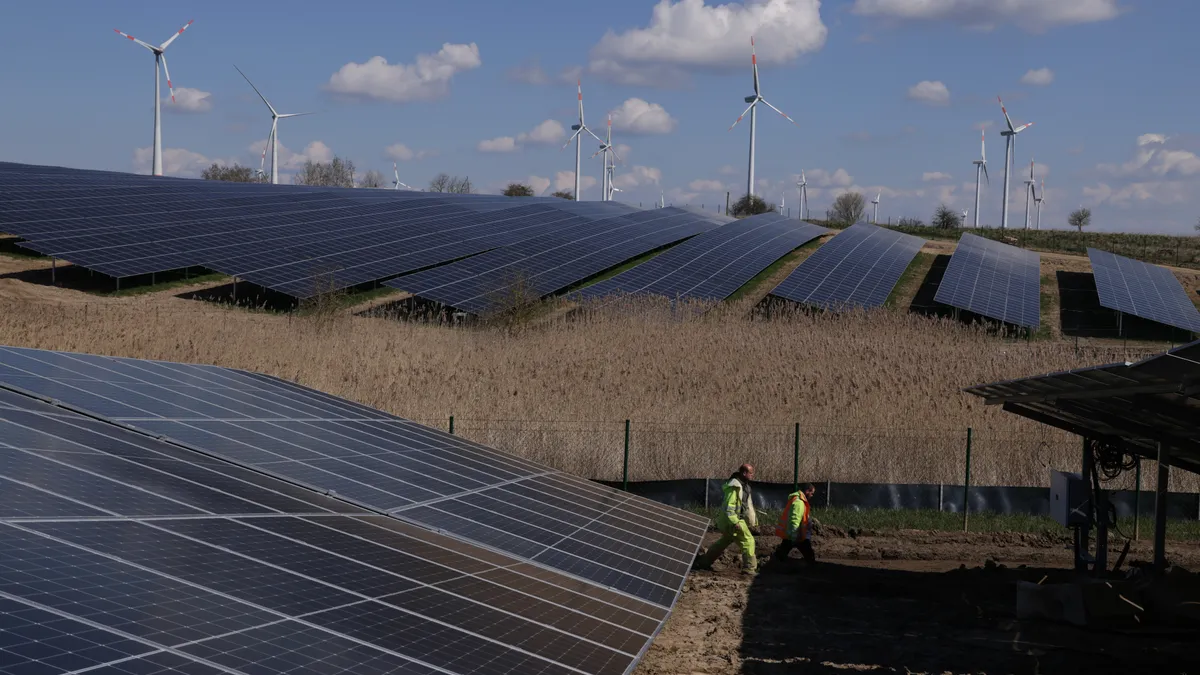Dive Brief:
- President Joe Biden is taking executive action to create a workforce training and service initiative to “put to work” 20,000 Americans in conservation and clean energy jobs, with a coordinating agreement between federal agencies, the White House announced Wednesday.
- The action comes as the clean energy industry is experiencing labor shortages and manufacturers and developers look to take advantage of billions in tax credits offered by the Inflation Reduction Act.
- Rob Thornton, president and CEO of the International District Energy Association, said in an interview that the plan “harkens back” to the New Deal, and that the program will “create more pathways” for people to participate in the energy industry.
Dive Insight:
“All American Climate Corps programs will be paid experiences that adhere to a common set of programmatic standards, and provide pathways to high-quality employment opportunities in the public and private sectors,” the White House said in a release. “No prior experience is required for most positions.”
The U.S. Department of Labor, Department of the Interior, Department of Agriculture, National Oceanic and Atmospheric Administration, Department of Energy and AmeriCorps will all sign a memorandum of understanding, the White House said. In addition, AmeriCorps will create a new hub to support the American Climate Corps.
Biden is also “encouraging” the CEO of AmeriCorps — an independent agency that facilitates stipended volunteer work — to consider expanding access to the Segal AmeriCorps Education Awards to the new initiative’s members, which would give them access to funds they could use to pay for additional education or reduce student debt.
“It feels like this could create more clarity for young people that the clean energy industry is a growing sector where they can build skills, grow their career, make a living, support a family, pay off debt,” Thornton said. “We’re very much in favor of it — the industry needs talent and resources.”
Industry experts have been sounding the alarm about renewable workforce needs since shortly after the IRA was passed, calling it an existential threat to the clean energy transition. “It’s gone from a critical issue to ‘the business doesn’t work unless we get this right’,” said Jack Thirolf, the head of public policy and institutional affairs at Enel, during an American Council on Renewable Energy event in March.
However, young workers have begun to flock to the industry, early career platform Handshake found in a July report. Many energy employers have begun to increase outreach, remove barriers to employment, and offer more internship and training programs — and many young workers are compelled by the mission of clean energy.
“I think young people really are feeling the anxiety of the reality of a fossil-driven climate crisis, and I do see them motivated to find a place where they can make a difference,” Thornton said.
His own career in the energy sector began in 1978, when he interned at the Ford Foundation and was tasked with researching the greenhouse effect. “I had this epiphany that our nation’s energy policy is really bad, and I could make a difference and make a living in energy,” Thornton said. “Young people are mission driven, and I think the climate crisis is one of the single most important missions we face.”
But a gap exists between clean energy’s aging workforce of skilled laborers and a nascent influx of young workers who haven’t yet accumulated institutional knowledge, Thornton said. As a result, he would like to see the American Climate Corps be implemented as a nimble program that is not “entirely prescriptive” and limited to specific energy sectors, but instead direct workers where they’re needed.
“I think it could be effective if the communities themselves are uncovering opportunities,” he said. “Let it flow up a bit.”















